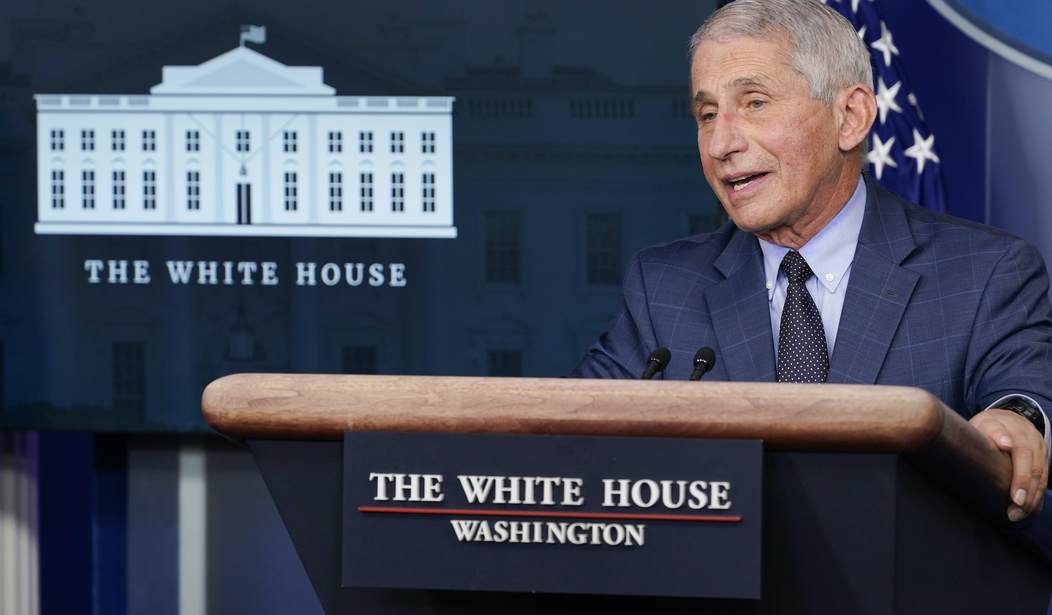Dr. Anthony Fauci appeared on ABC’s This Week to discuss school reopening, asserting that the stimulus bill is needed to ensure schools have more resources. Host George Stephanopoulos asked about the new guidelines in an exchange:
Stephanopoulos: They are guidelines, but they are not requirements. How confident are you that the guidelines will be followed and do school districts have the resources they need to reopen safely?
Fauci: Well, George, the second part of your question is really a good one. I think that the schools really do need more resources and that the reason why the national relief act [stimulus bill] that we’re talking about getting passed, we need that. The schools need more resources. The things we didn’t have before, there wasn’t anything that was put down solidly on paper on saying these are the kind of things you should consider. These are the kind of things you should follow. I mean there was talk about it, but it wasn’t actually put down in a single document you could access.
The idea that these are the first published guidelines is an odd assertion from Fauci. On or about May 23, 2020, the CDC issued its first set of school reopening guidelines. The agency updated them throughout 2020, and the most recent update was, of course, on February 11th of this year under the new CDC director. Nationally, schools have surpassed the Biden administration’s goal of having 50% of schools open in 100 days. MCH strategic data reports that 51% of school districts across the country have hybrid learning, which combines in-person and virtual schooling. Only 23% are offering online-only.
Another organization, Burbio, aggregated data from 80,000 public school websites and found that 39.7% offered traditional in-person learning and 25.1% were offering hybrid options. This finding is already far above the 50% target; 64.8% of schools are open for at least some in-person teaching.
Dr. Fauci’s interview was a follow-up to new CDC guidelines issued last week, which clearly state that officials should prioritize open schools:
K–12 schools should be the last settings to close after all other mitigation measures in the community have been employed, and the first to reopen when they can do so safely. Schools should be prioritized for reopening and remaining open for in-person instruction over nonessential businesses and activities.
The guidelines primarily emphasize low- or no-cost mitigation strategies. These include social distancing, podding children into cohorts that move together throughout the day, mask-wearing, handwashing, and cleaning strategies. This advice is supported by several studies in the U.S. and by international experience. They also state that complete vaccination of staff is not required to reopen safely. The U.S. is one of the only industrialized countries that has not returned children to school nationwide.
Further, schools received billions in the original CARES Act. Secretary Betsey DeVos noted that as of September 30, 2020, state and local officials had spent only 12% of the initial assistance money. Florida, which has had schools open for hybrid learning at the parents’ discretion since fall, still has a significant amount of unspent funds from the first stimulus. Governor DeSantis has proposed spending the funds on teachers’ salaries and increasing support services, including mental health services, in K-12 environments. Oklahoma and Louisiana also have a significant amount of unspent funds.
Schools are using funds to increase the number of nurses in the schools and for monthly cleaning supplies—not for the overhaul to facilities ventilation systems and plexiglass barriers that President Biden has indicated are required. The Florida K-12 House budget writer, Representative Randy Fine, noted:
“Our schools have been drowning in federal funding. Covid, it turns out, is the greatest booster for K-12 education in the history of public education.”
Fine went on to note that the proposed spending has some good ideas, but not all are COVID-19 related:
Fine poked holes in the agency’s CARES Act spending plan, which includes $8 million for free SAT/ACT testing, $5 million for reading coaches and $20 million to cement the state’s new reading curriculum.
“The vast majority of these things sound like good ideas that aren’t necessarily Covid response ideas,” Fine said.
Florida will receive $2.8 billion in the second stimulus, roughly four times what it received for schools in the first round. In an era of rapidly rising debt that could signal coming inflation or stagflation, Washington should be taking a much more targeted approach to pandemic relief.
The administration also needs to take a hard line with the teachers’ unions for our children’s sake. The latest jarring news about the pandemic’s effect on them comes from San Francisco. According to a lawsuit against the San Francisco Unified School District, UCSF Benioff Children’s Hospital has seen a 66 percent increase in the number of suicidal children in the emergency room and a 75 percent increase in youth who required hospitalization for mental health services. UCSF Mission Bay also reports record numbers of suicidal children and increases in mental health diagnoses like anxiety, depression, and eating disorders.
The Biden team needs to live up to its pledge to follow the science and stop pandering to political donors. An entire generation is at stake.










Join the conversation as a VIP Member